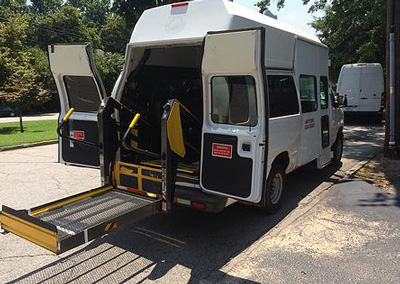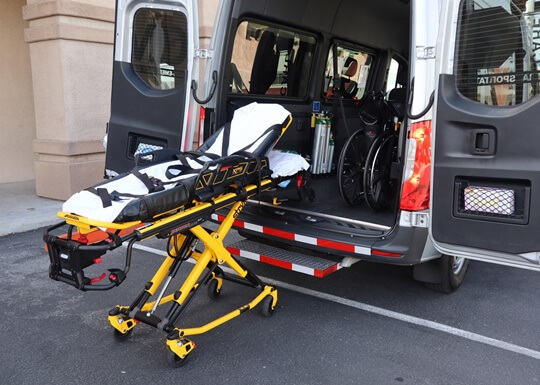Reliable Medical Transportation Services Near Me: Your Accessible Option
Reliable Medical Transportation Services Near Me: Your Accessible Option
Blog Article
Easily Accessible and Affordable Medical Transportation Options for Seamless Wellness Assistance
In the world of healthcare, the availability and price of medical transportation are vital in making certain individuals can access the care they require when they need it. From non-emergency medical transport solutions to innovative options like telehealth, the landscape of clinical transport is evolving to meet the varied demands of individuals.
Non-Emergency Medical Transport Solutions

These solutions are staffed by experienced professionals who prioritize client comfort and security throughout transportation. Vehicle drivers are outfitted to handle individuals with varying medical needs and guarantee that all trips are smooth and trouble-free - Medical Transportation Services Near Me. Additionally, non-emergency medical transportation services typically use customized vehicles that are wheelchair-accessible, making them ideal for a large range of individuals with different wheelchair needs
Volunteer Driver Programs
Volunteer vehicle driver programs are important in offering transport help for people seeking non-urgent treatment. These programs rely upon the generosity of volunteers who donate their time and vehicles to aid transportation clients to and from medical visits. By utilizing volunteer motorists, organizations can provide an economical remedy for people that may not have access to dependable transportation.
Among the vital advantages of volunteer chauffeur programs is the individualized treatment and interest that patients obtain. Unlike conventional transportation solutions, volunteer chauffeurs often create a connection with the people they help, creating a encouraging and caring atmosphere throughout what can be a difficult time. Additionally, volunteer vehicle driver programs can assist connect the void for people residing in underserved or rural locations where public transport alternatives may be limited.
Mass Transit Options

One of the key benefits of public transport is its prevalent availability in urban and rural areas alike. This extensive network enables patients from varied backgrounds to take a trip to medical appointments with loved one ease. Additionally, public transport systems are typically furnished to suit individuals with specials needs, giving accessible travel choices for those with flexibility challenges.

Ride-Sharing and Transportation Network Companies
The evolution of contemporary transportation choices for clinical functions expands past conventional public systems like trains and buses to encompass the ingenious world of ride-sharing and transport network companies. Ride-sharing services such as Uber and Lyft have changed the way people take a trip to clinical consultations, supplying ease and flexibility to patients that might not have accessibility to their vehicles or standard public transport. These systems permit customers to ask for an adventure with the touch of a switch on their mobile phones, supplying door-to-door solution that can be specifically advantageous for individuals with wheelchair obstacles or those calling for aid.
Transportation network companies (TNCs) have also played a significant role in bridging the gap in clinical transport solutions. Business like Veyo and RoundTrip focus on non-emergency medical transport, satisfying patients who need a greater degree useful throughout their trips to medical centers. By partnering with doctor and insurance firms, TNCs guarantee that people can access timely and dependable transportation options, ultimately adding to enhanced health and wellness results and person fulfillment.
Telehealth and Digital Assessments
Enhancing medical care accessibility and convenience, telehealth and online appointments have arised as essential elements in contemporary medical techniques, transforming the way clients interact with doctor. Telehealth leverages innovation to promote remote interaction in between clients and health care experts, supplying a wide selection of solutions such as digital consultations, remote tracking, and digital prescriptions. Digital appointments enable clients to seek clinical suggestions, diagnosis, and treatment from the comfort of their homes, getting rid of the requirement for physical brows through to medical care facilities. This approach not only saves time and minimizes transport prices for patients however also boosts the overall performance of medical care shipment.
In addition, telehealth plays a crucial duty in prolonging medical services to underserved areas, country locations, and individuals with limited movement. By breaking down geographical obstacles and raising medical care outreach, telehealth promotes early intervention, connection of care, and patient involvement. As modern technology remains to breakthrough, telehealth is positioned to play a progressively significant duty in forming the future of medical care distribution, promoting enhanced health end results and client fulfillment.
Conclusion

From non-emergency get more clinical transportation solutions to ingenious solutions like telehealth, the landscape of clinical transportation is progressing to meet the varied requirements of patients.Non-Emergency Medical Transport Services promote the risk-free and timely transport of individuals calling for non-urgent clinical care to and from health care facilities.The advancement of modern transport alternatives for clinical functions Continued expands beyond standard public systems like buses and trains to incorporate the innovative world of ride-sharing and transport network business.Transport network companies (TNCs) have additionally played a considerable duty in bridging the space in clinical transportation services. Non-Emergency Medical Transport Services, Volunteer Motorist Programs, Public Transportation Options, Ride-Sharing and Transport Network Firms, and Telehealth and Virtual Consultations all play a check these guys out critical function in addressing transport barriers to medical care access.
Report this page